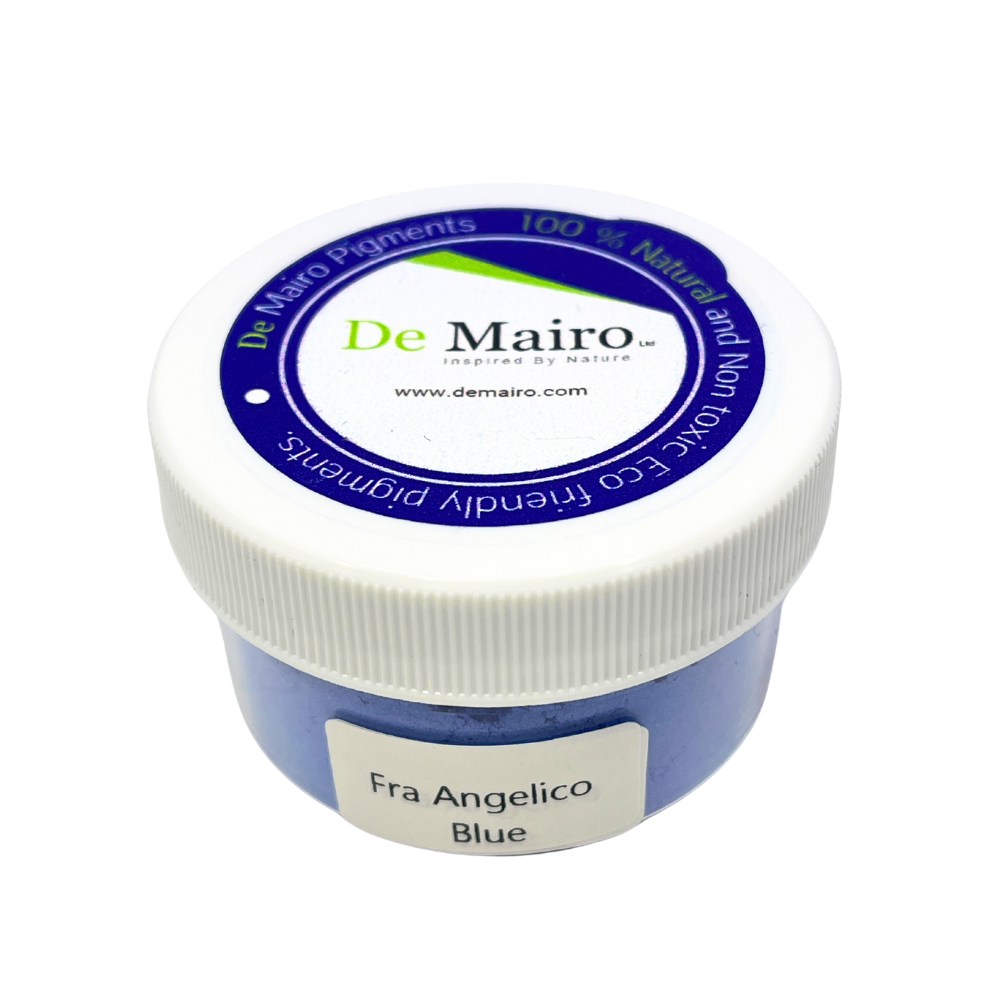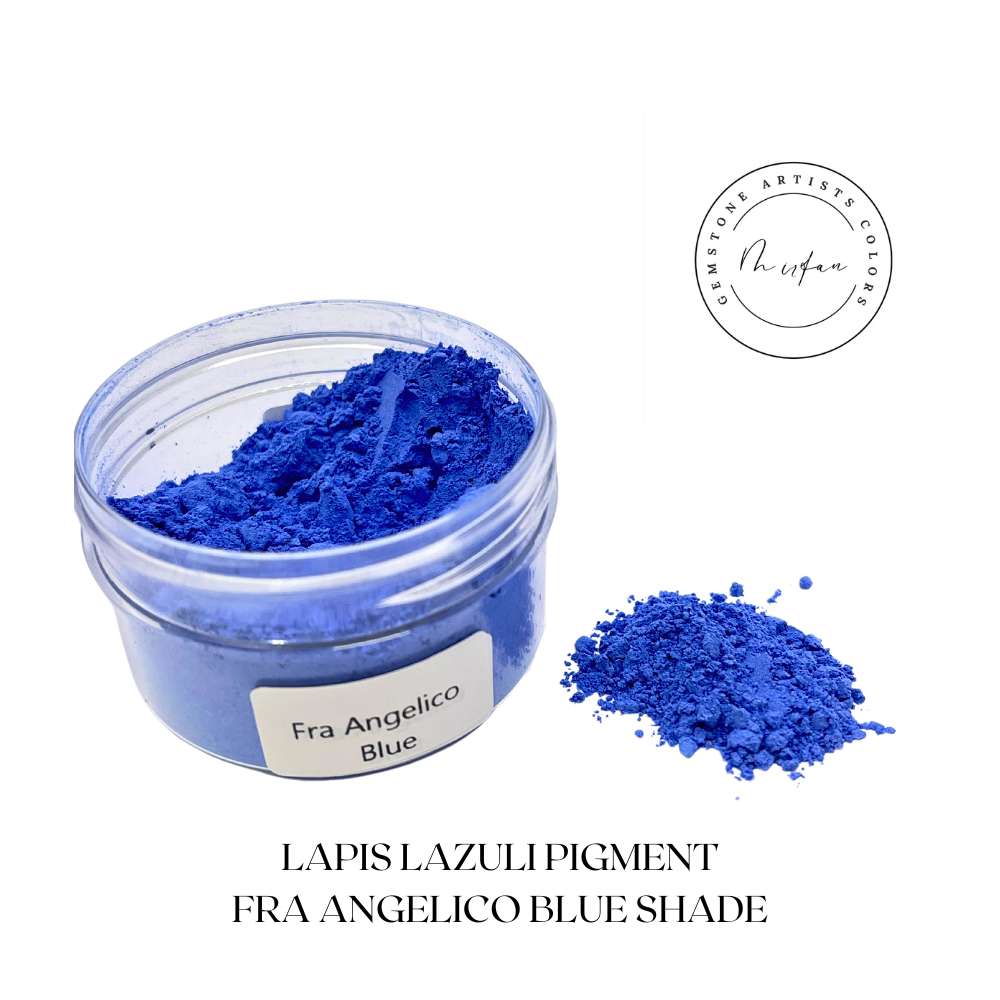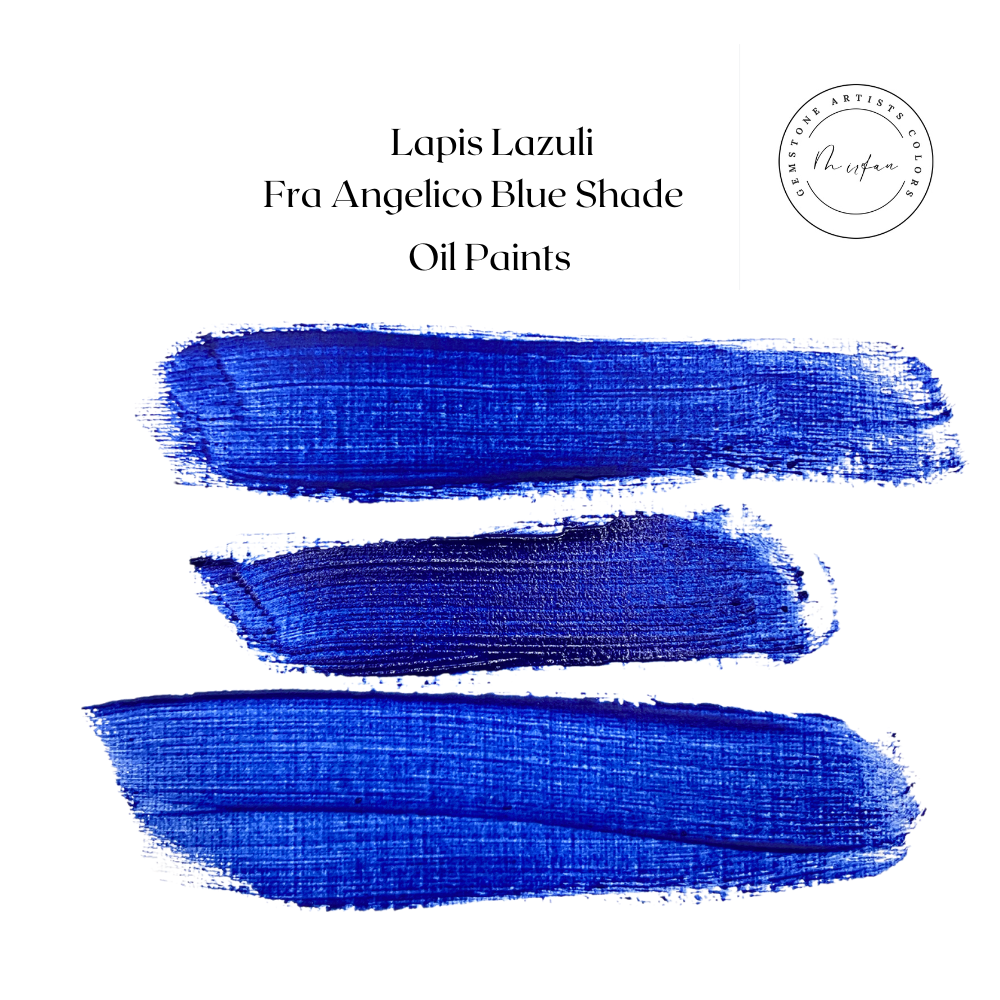De Mairo
Lapis Lazuli Fra Angelico Pigment
Lapis Lazuli Fra Angelico Pigment
Couldn't load pickup availability
Share
We are introducing our premium Lapis Lazuli Ultramarine Pigment - the ultimate choice for artists looking to achieve a rich, deep blue color in their paintings and creations.
Derived from the semi-precious gemstone Lapis Lazuli, our pigment is 100% natural and contains no synthetic or artificial ingredients. The deep blue color is due to the presence of lazurite, a mineral that gives the stone its characteristic hue.
Our Lapis Lazuli Ultramarine Pigment is carefully extracted and ground to a fine powder, making it easy to mix with various mediums and achieve a consistent color. It can be used in oil paints, acrylics, watercolours, inks, and more.
Not only is our pigment a beautiful and vibrant color, it is also non-toxic, making it safe to use for artists of all ages. And it's lightfastness and stability ensure your artwork will last for many years to come.
Our Lapis Lazuli Ultramarine Pigment is also available in a variety of sizes to meet the needs of artists of all skill levels, from students to professionals.
In addition, our pigment is ethically sourced and produced, ensuring that it is obtained in an environmentally sustainable way.
Experience the beauty and depth of Lapis Lazuli in your next art project with our premium Ultramarine Pigment. Order now and elevate your art to the next level!
HISTORY OF LAPIS LAZULI PIGMENT:
Lapis lazuli is a deep blue semi-precious stone that has been used as a pigment in art for centuries. The ancient Egyptians, Greeks, and Romans all used lapis lazuli to create stunning blue hues in their paintings and frescoes. The pigment was also highly prized by medieval and Renaissance painters, who used it to create rich, vibrant blues in their works.
One of the most famous examples of the use of lapis lazuli in art is the ceiling of the Sistine Chapel, painted by Michelangelo in the early 16th century. The deep blues used in the ceiling frescoes were achieved by grinding lapis lazuli into a fine powder and mixing it with a binder, such as egg yolk or oil.
In the Renaissance period, lapis lazuli was so expensive that it was used sparingly, mostly reserved for the robes of Virgin Mary, the most important figures or the most striking parts of the painting. This makes the use of lapis lazuli in a painting a symbol of the wealth and importance of the patron who commissioned the work.
Another famous artist who used lapis lazuli in his paintings is the Flemish painter Jan van Eyck. In his 1432 painting "The Arnolfini Portrait," van Eyck used lapis lazuli to create a rich blue background, which was intended to symbolize the spiritual realm and the divine.
The use of lapis lazuli as a pigment began to decline in the 18th century with the discovery of new blue pigments such as ultramarine and cobalt blue. These new pigments were cheaper and more consistent in color than lapis lazuli, and as a result, they became the preferred choice of artists.
In summary, lapis lazuli was a highly prized pigment used by Old Masters to create rich, vibrant blues in their paintings. Famous artists such as Michelangelo and Jan van Eyck used the pigment in their masterpieces to symbolize the wealth and importance of their patrons, as well as to represent the spiritual realm.








